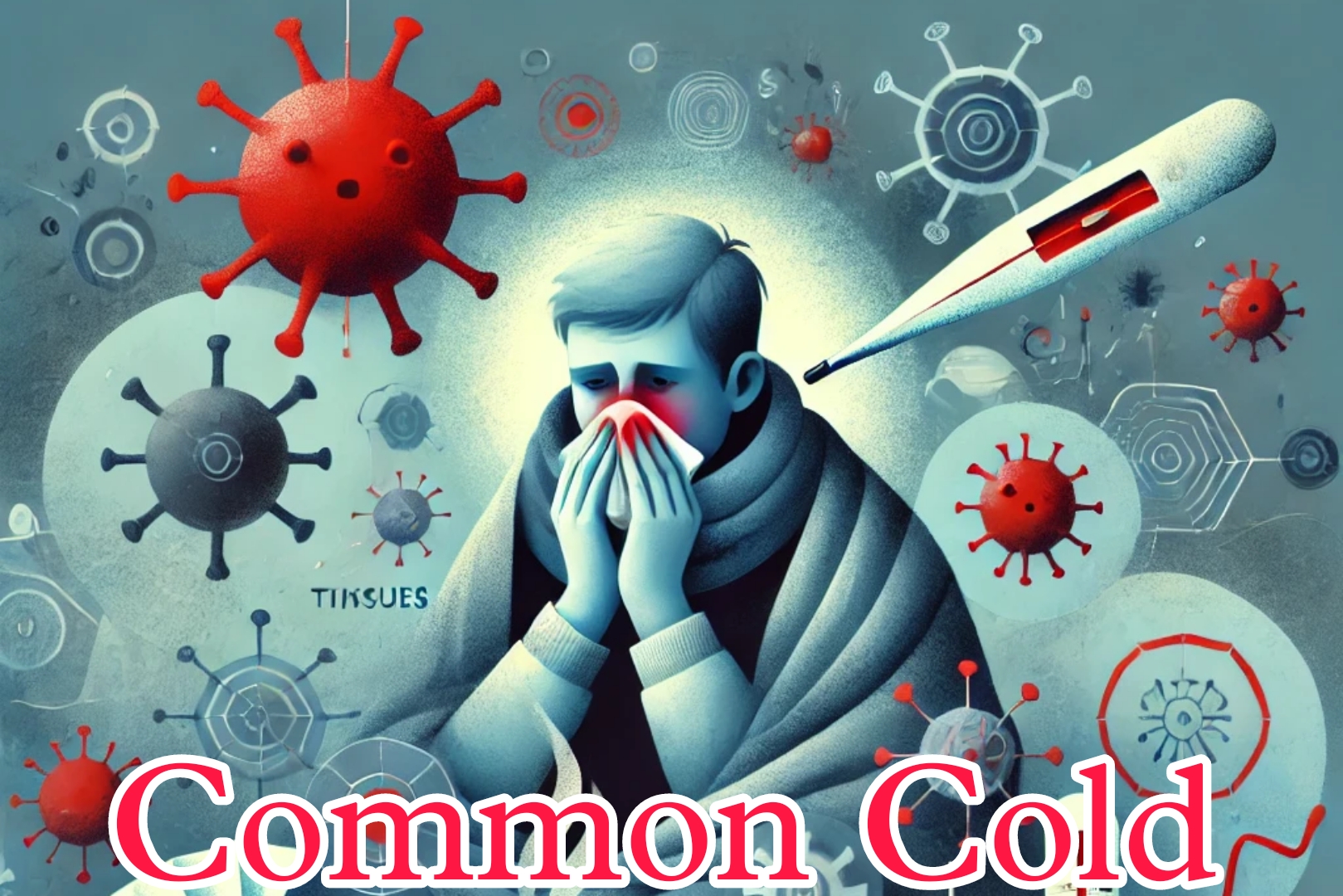The common cold is one of the most widespread illnesses in the world, affecting people of all ages, genders, and geographic locations. While it is typically mild and self-limiting, the common cold can disrupt daily activities, lower productivity, and cause discomfort. This article provides an in-depth look at the common cold, exploring its causes, symptoms, treatment options, and preventive measures.
What Is the Common Cold?
The common cold is a viral infection that primarily affects the upper respiratory tract, including the nose, throat, and sinuses. It is caused by various viruses, with rhinoviruses being the most common culprit. Although the common cold is usually harmless, its symptoms can range from mild to moderate, occasionally leading to complications like sinus infections or ear infections, especially in vulnerable populations like young children and the elderly.
Causes of the Common Cold
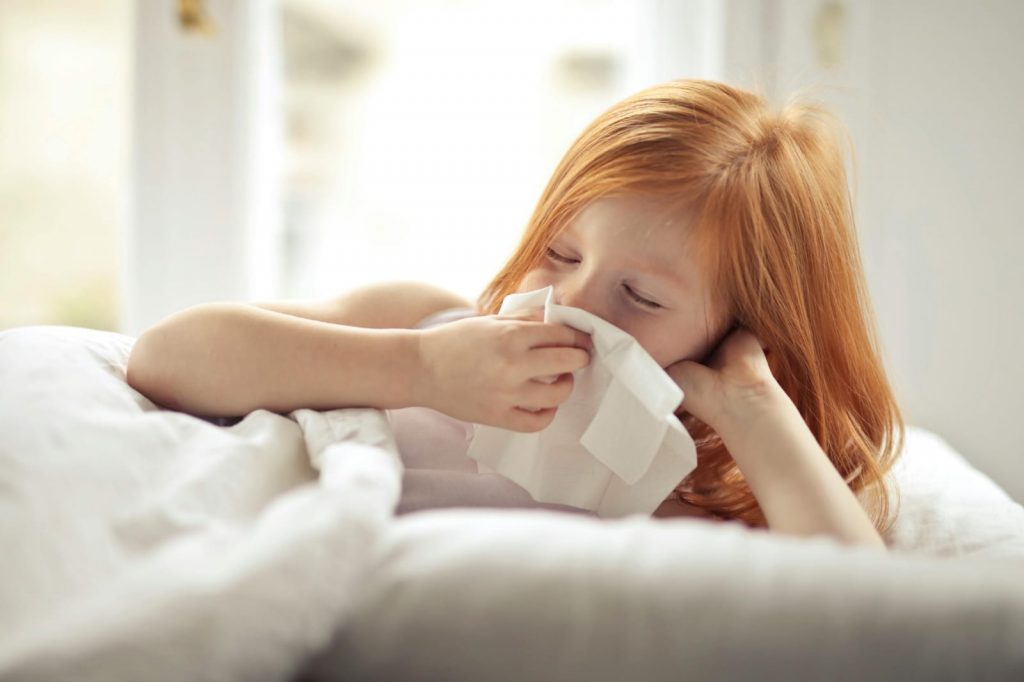
1. Viral Infections
The common cold is caused by more than 200 different viruses, but the most prevalent are:
- Rhinoviruses: Responsible for 30-50% of colds.
- Coronaviruses: Account for approximately 15% of cases (distinct from COVID-19-causing SARS-CoV-2).
- Adenoviruses: Often associated with cold-like symptoms and respiratory infections.
- Respiratory Syncytial Virus (RSV): Particularly common in infants and older adults.
2. Transmission
Cold viruses spread easily from person to person through:
- Airborne Droplets: Sneezing, coughing, or talking releases virus-laden droplets into the air.
- Direct Contact: Shaking hands or touching infected surfaces like doorknobs, phones, or keyboards.
- Self-Inoculation: Touching your eyes, nose, or mouth after contact with contaminated surfaces or hands.
3. Risk Factors
Certain factors increase the likelihood of catching a cold:
- Age: Young children, whose immune systems are still developing, are more susceptible.
- Season: Colds are more common in fall and winter due to indoor crowding and lower humidity.
- Weakened Immune System: Stress, fatigue, or underlying illnesses can lower immunity.
- Close Contact: Crowded environments like schools, offices, and public transport facilitate transmission.
Symptoms of the Common Cold

Cold symptoms usually develop within one to three days after exposure to the virus. The severity and combination of symptoms vary between individuals but commonly include:
1. Initial Symptoms
- Scratchy or sore throat.
- Nasal congestion or runny nose.
- Sneezing.
2. Progressive Symptoms
- Cough: Often mild but can become more persistent.
- Headache: Due to sinus pressure or dehydration.
- Fatigue: A result of the body’s immune response.
- Low-Grade Fever: Rare in adults but more common in children.
3. Additional Symptoms
- Watery eyes.
- Mild muscle aches.
- Postnasal drip causing throat irritation.
Symptoms typically peak within 2-3 days and resolve within 7-10 days, though coughing can linger for a few weeks.
Differentiating the Common Cold from Other Illnesses
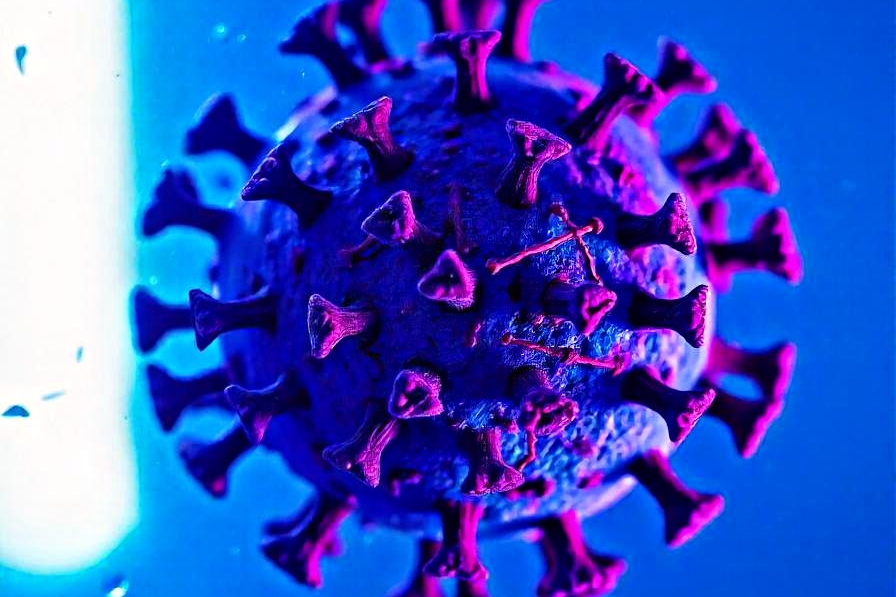
1. Cold vs. Flu
- Cold: Gradual onset, mild fever (if any), runny nose, and mild fatigue.
- Flu: Sudden onset, high fever, severe body aches, and pronounced fatigue.
2. Cold vs. Allergies
- Cold: Accompanied by sore throat and occasional fever.
- Allergies: Triggered by allergens, causing itchy eyes and no fever.
3. Cold vs. COVID-19
- Cold: Rarely associated with loss of taste or smell.
- COVID-19: Often includes fever, dry cough, and loss of taste or smell. Testing is required for confirmation.
Complications of the Common Cold
While most colds resolve without serious issues, complications can occur, particularly in high-risk groups:
- Sinusitis: Viral infections can lead to secondary bacterial infections in the sinuses.
- Ear Infections: Fluid buildup in the ear can result in pain and infection.
- Asthma Flare-Ups: Colds can trigger asthma symptoms in those with the condition.
- Bronchitis: Persistent coughing may evolve into bronchitis, especially in smokers.
Diagnosis of the Common Cold
Healthcare providers typically diagnose a cold based on symptoms and medical history. Laboratory tests are rarely necessary unless complications or other illnesses are suspected. Key indicators include nasal congestion, throat irritation, and absence of high fever or severe symptoms characteristic of other infections.
Treatment of the Common Cold
Since the common cold is caused by viruses, antibiotics are ineffective. Treatment focuses on relieving symptoms and supporting the body’s natural recovery process.
1. Over-the-Counter Medications
- Decongestants: Reduce nasal swelling (e.g., pseudoephedrine).
- Antihistamines: Relieve runny nose and sneezing.
- Pain Relievers: Alleviate headaches and body aches (e.g., ibuprofen, acetaminophen).
- Cough Suppressants and Expectorants: Manage persistent coughing.
2. Home Remedies
- Hydration: Drink plenty of fluids to stay hydrated and thin mucus.
- Rest: Allow the body to recover by avoiding strenuous activities.
- Steam Inhalation: Helps relieve nasal congestion.
- Saltwater Gargle: Soothes sore throats.
- Honey and Lemon: Eases coughing and throat irritation.
3. Lifestyle Adjustments
- Avoid smoking and exposure to irritants.
- Elevate the head during sleep to reduce nasal congestion.
4. When to See a Doctor
Seek medical attention if:
- Symptoms persist for more than 10 days.
- High fever or severe headache develops.
- Shortness of breath or chest pain occurs.
Prevention of the Common Cold
Preventing the common cold involves minimizing exposure to viruses and bolstering the immune system.
1. Hygiene Practices
- Wash hands frequently with soap and water.
- Avoid touching the face, particularly the eyes, nose, and mouth.
- Disinfect commonly touched surfaces like door handles and keyboards.
2. Boosting Immunity
- Eat a balanced diet rich in fruits, vegetables, and whole grains.
- Stay physically active and maintain a healthy weight.
- Get adequate sleep and manage stress levels.
3. Vaccinations and Prophylactic Measures
- While there is no vaccine for the common cold, annual flu shots and RSV vaccines can prevent other respiratory infections that mimic cold symptoms.
4. Social Precautions
- Avoid close contact with sick individuals.
- Cover your mouth and nose when sneezing or coughing to prevent spreading germs.
Myths and Misconceptions About the Common Cold
- Cold Weather Causes Colds:
While colds are more prevalent in winter, they are caused by viruses, not cold temperatures. - Vitamin C Cures Colds:
While vitamin C may slightly reduce the duration of a cold, it does not prevent or cure it. - Antibiotics Help Colds:
Antibiotics are ineffective against viral infections like the common cold. - Green Mucus Means Infection:
Green or yellow mucus is a normal part of the immune response and doesn’t necessarily indicate a bacterial infection.
The Economic Impact of the Common Cold
1. Healthcare Costs
While the common cold rarely requires hospitalization, it incurs significant healthcare costs due to doctor visits, over-the-counter medication purchases, and, in some cases, missed work or school days.
- Global Perspective: Billions of dollars are spent annually on cold treatments and remedies worldwide.
- Indirect Costs: Absenteeism from work and reduced productivity contribute to economic losses.
2. Workplace Impact
- Presenteeism: Many individuals go to work while symptomatic, spreading the virus and reducing workplace efficiency.
- Sick Days: Colds are one of the leading causes of short-term sick leave globally.
The Role of the Immune System in the Common Cold
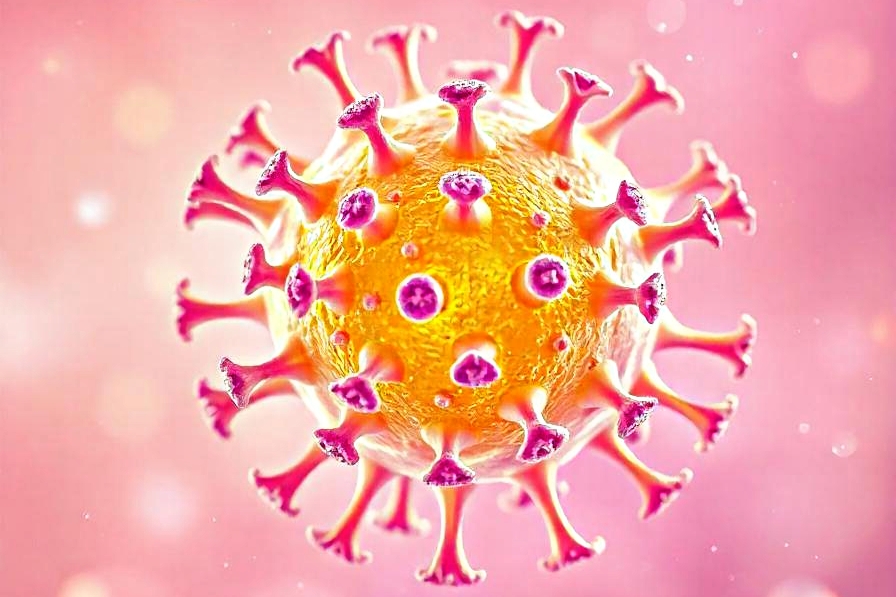
The immune system plays a critical role in determining the severity and duration of a cold.
1. Initial Defense Mechanisms
- Mucosal Barrier: The nasal lining traps and neutralizes pathogens.
- Cilia Movement: Tiny hair-like structures in the respiratory tract push out invaders.
2. Adaptive Immune Response
- Antibody Production: The body produces specific antibodies to fight cold-causing viruses.
- Memory Cells: The immune system develops memory cells for future encounters, although the vast variety of cold viruses makes complete immunity unlikely.
3. Impact of Lifestyle on Immunity
- A balanced diet, regular exercise, and stress management bolster immunity.
- Chronic stress or inadequate sleep can suppress immune responses, making individuals more prone to infections.
Natural and Alternative Remedies
Many people turn to natural and alternative treatments to manage or prevent the common cold. Here’s a closer look at popular remedies and their effectiveness:
1. Herbal Remedies
- Echinacea: Believed to reduce the severity and duration of colds, though evidence is mixed.
- Ginger Tea: Known for its anti-inflammatory and soothing properties.
- Elderberry Syrup: Popular for immune support and symptom relief.
2. Supplements
- Zinc: Some studies suggest that zinc lozenges may shorten cold duration if taken early.
- Vitamin C: Regular intake might slightly reduce the risk of colds in highly active individuals.
3. Aromatherapy
- Essential Oils: Peppermint and eucalyptus oils are commonly used to relieve congestion when inhaled.
4. Acupuncture and Acupressure
- These practices are believed to enhance immune function and alleviate cold symptoms, though more research is needed to confirm their efficacy.
Psychological and Social Impacts of the Common Cold
1. Mental Fatigue
While the common cold is often viewed as a minor illness, it can cause considerable mental strain due to sleep disturbances, discomfort, and reduced productivity.
2. Social Isolation
- People with colds may avoid social interactions to prevent spreading the virus, leading to temporary feelings of loneliness or disconnection.
- In cultures where taking sick leave is stigmatized, individuals might feel pressured to work while ill, perpetuating the spread of the virus.
3. Cultural Perceptions
- Attitudes toward colds vary by culture. For instance, some societies place a strong emphasis on rest and herbal remedies, while others prioritize returning to normal activities as quickly as possible.
Advances in Research on the Common Cold
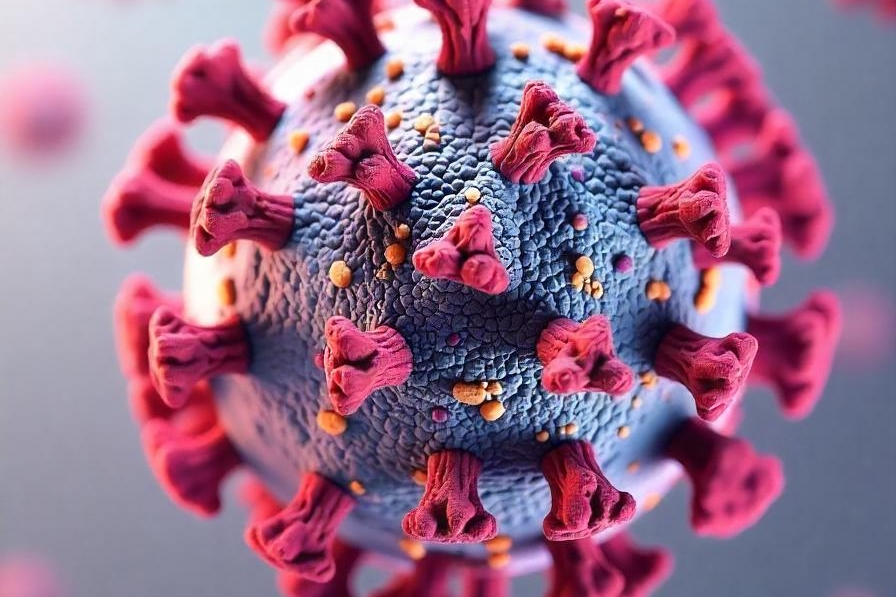
The common cold remains an area of ongoing research, particularly in understanding its complex biology and potential treatments.
1. Vaccines for Rhinoviruses
Developing a vaccine for the common cold is challenging due to the sheer number of viruses involved. However, scientists are exploring:
- Universal vaccines targeting shared viral components.
- mRNA-based approaches inspired by COVID-19 vaccine success.
2. Antiviral Medications
Researchers are working on broad-spectrum antivirals to reduce the severity and duration of colds. These medications aim to inhibit viral replication and alleviate symptoms.
3. Immune Modulators
Drugs that enhance the body’s natural immune response may provide another avenue for managing colds more effectively.
Myths About Treating and Preventing Colds
Misinformation about the common cold is widespread. Let’s debunk some of the most persistent myths:
- Feed a Cold, Starve a Fever:
- Both colds and fevers require proper nutrition and hydration to support recovery.
- Wet Hair Causes Colds:
- Cold weather and wet hair do not directly cause colds; viruses do. However, cold environments might weaken local immune responses, slightly increasing susceptibility.
- You Can Catch a Cold by Sharing Utensils:
- While indirect contact is a possible transmission route, viruses on hands and shared surfaces are more common culprits.
Coping With Persistent Symptoms
For some individuals, symptoms like coughing or nasal congestion persist beyond the typical recovery period.
1. Post-Viral Cough
- A lingering cough can last for weeks due to throat irritation or airway hypersensitivity.
- Remedies include hydration, throat lozenges, and inhaling steam.
2. Chronic Sinus Congestion
- Recurrent colds can lead to prolonged sinus inflammation.
- Treatments like saline rinses, decongestants, or consulting an ENT specialist may help.
The Role of Nutrition in Cold Prevention
A strong immune system relies on a nutrient-rich diet. Key nutrients for cold prevention include:
- Vitamin C: Found in citrus fruits, bell peppers, and strawberries.
- Zinc: Present in shellfish, legumes, and seeds.
- Vitamin D: Essential for immune health, especially in winter months.
- Probiotics: Found in yogurt and fermented foods, promoting gut health and immunity.
Final Thoughts
The common cold, despite its prevalence, is far from trivial. Its ability to spread easily, disrupt daily life, and occasionally lead to complications makes it a significant public health issue. However, understanding its causes, symptoms, and management strategies empowers individuals to recover quickly and reduce transmission.
By adopting preventive measures, maintaining a healthy lifestyle, and staying informed about advancements in research, we can minimize the impact of this seemingly simple yet complex illness. The common cold may be inevitable, but with the right approach, its effects can be mitigated effectively.

